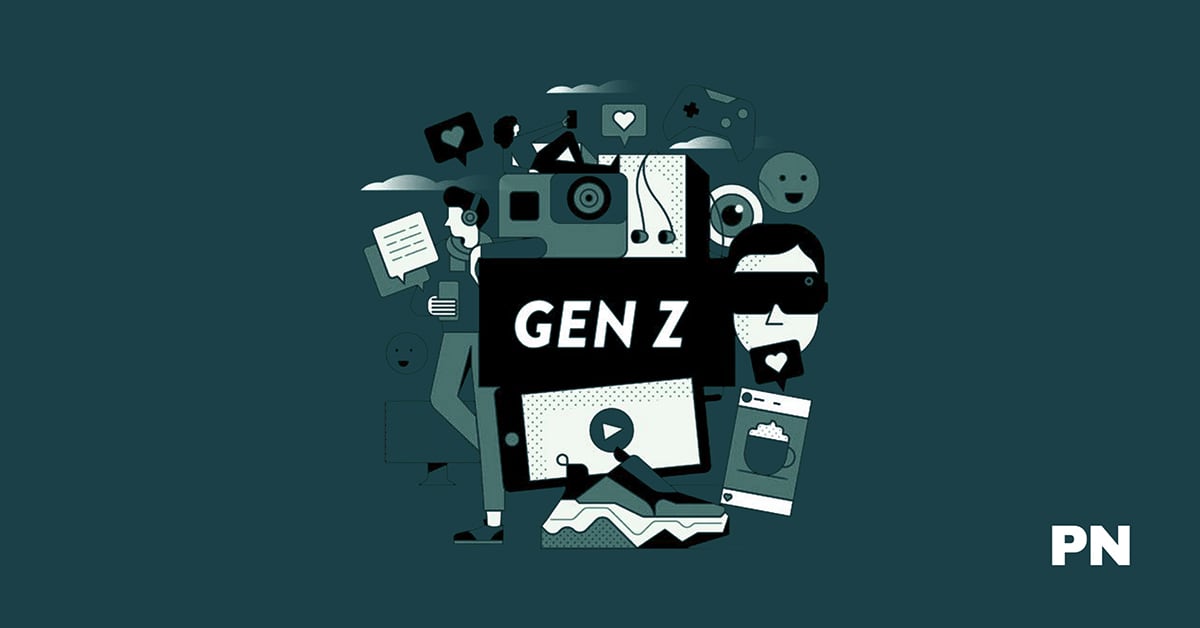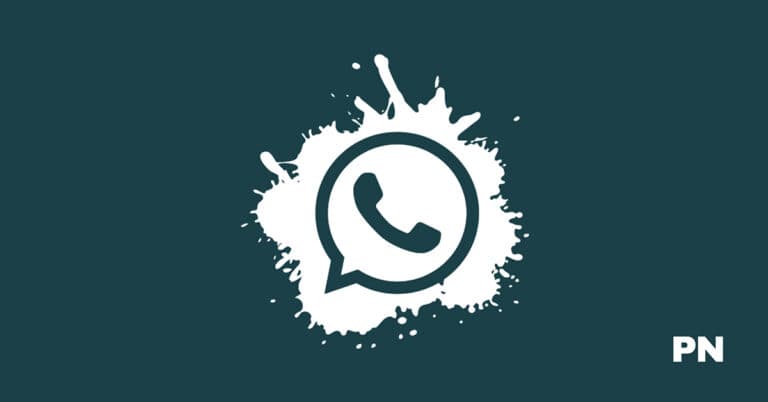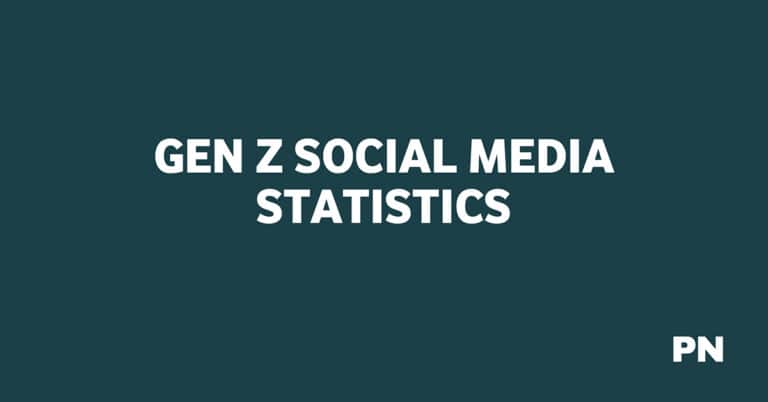35 Gen Z Marketing Statistics: Insights for Targeted Campaign Strategies

With an estimated $360 billion in purchasing power, Gen Z is rewriting the marketing rules.
Your approach to capturing their attention must be swift, as they lose interest in ads faster than any other generation.
They have an active attention span of just 1.3 seconds.
Understanding Gen Z’s behavior is pivotal—they prefer authenticity and creativity in advertisements, with over half finding creative ads appealing.
Their online presence is staggering, with the majority streaming videos daily and consulting social media for purchasing decisions.
Privacy and individuality are paramount; they value personalized experiences from brands that treat them as unique individuals.
1. Gen Z has an estimated $360 billion purchasing power.
(Source: eMarketer)
Gen Z’s financial influence stems from their earnings and is amplified by the support some receive. They represent a diverse, tech-savvy group with unique spending habits that intrigue businesses and marketers.
Your strategy to engage with them must adapt to their preferences and behaviors to tap into their significant spending power effectively.
Your focus on Gen Z could pivot on how to appeal to a demographic that is not only earning but is also willing to spend, provided you meet their expectations and values.
2. 61% of Gen Z have a positive attitude towards AI-generated content on social media.
(Source: eMarketer)
Gen Z’s embrace of AI has concrete applications, as reflected in a few activities they are already using AI for:
- Editing and proofreading essays
- Checking programming code
- Assisting in travel itinerary planning
Your approach to social media marketing should recognize this cohort’s inclination toward AI.
Use it not just for innovative content creation but also to improve the convenience and efficiency of your services.
This strategy can maximize your brand’s relatability and presence in the digital spaces where Gen Z spends considerable time.
3. About 94% of Gen Zers Streamed Video in 2023
(Source: eMarketer)
Gen Zers engage with content—choosing streaming platforms over traditional broadcast media.
Key Devices Used for Streaming:
- Smartphones
- Laptops/PCs
- Smart TVs
- Tablets
Given Gen Zers’ attachment to mobile devices, it’s no surprise that smartphones are at the top of this list.
They facilitate instant access to a world of digital content, fitting snugly into the on-the-go lifestyle that many embody.
As a marketer targeting Gen Z, it’s crucial to recognize these behaviors and adapt your strategies to align with the streaming trend.
Creating engaging, mobile-optimized video content can effectively capture your attention and foster a connection.
4. Gen Z takes just 1.3 seconds to lose active attention to ads—less time than any other age group.
(Source: eMarketer)
As someone seeking to engage with Generation Z through advertising, it’s crucial to recognize their unique attention patterns. within this narrow time frame.
Therefore, your advertisements should:
- Hook Viewers Immediately: Use visuals or messages that stand out.
- Convey Core Message Succinctly: Present your key point clearly and concisely.
- Employ Engaging Formats: Consider short-form video and interactive content.
Remember, Gen Z grew up in a digital environment rich with various stimuli, leading them to filter content rapidly.
They’re adept at navigating this landscape, so your content needs to do more than just attract—it must also provide immediate value or intrigue to hold their attention beyond the initial 1.3 seconds.
5. Over half (52%) of Gen Zers in the U.S. love creative and entertaining advertisements.
(Source: PR Newswire)
Focusing on creativity and entertainment is key when designing marketing strategies for Gen Z in the U.S.
For this demographic, traditional ads are less effective. Instead, they are 43% more engaged when informative ads feature a unique and captivating approach.
These can include interactive elements, humor, or storytelling that resonates with your audience.
Moreover, 36% of Gen Z consumers prefer ads that inform them about sales or promotions.
If they have previously purchased a product or if it aligns with their interests, ads highlighting discounts or special promotions are notably effective.
6. 58% of Surveyed U.S. Gen Zers Reported They Disliked Ads That Interrupted Their Content.
(Source: PR Newswire)
As a member of Generation Z, you are likely among the 58% who distaste for advertisements that disrupt their digital experience.
Interruption advertising—such as pop-ups or pre-roll video ads that halt content consumption—seems undesirable among Generation Z peers.
Recognizing your preferences and tailoring your strategies is paramount for marketers aiming to engage with Gen Z.
The data suggests that if you find an ad intrusive, too loud, or misaligned with your social views, it may not only be ignored but could also potentially harm the brand’s perception.
7. 61% of Gen Z Shoppers Will Check for Secondhand items before Getting the New Version.
(Source: eMarketer)
To most Gen Zers, secondhand items are more beneficial than the latest versions. For example, secondhand shopping is often more cost-effective.
If you’re among the 61% of people who prefer secondhand items, consider exploring curated online shops, community thrift stores, or garage sales to find unique pieces and contribute to a more sustainable shopping cycle.
8. Three-quarters of Gen Z adults had used YouTube at least once a day in the past month, and 19 percent had used the platform at least once a week.
(Source: Statista)
When shaping your marketing strategies, it’s critical to understand Generation Z’s preferences.
Your ability to effectively engage this audience depends on knowing where they spend their time. Recent data suggests that YouTube is central to their daily media consumption.
9. 93% of surveyed Gen Z consumers in the United States had consulted social media at least once a week.
(Source: Statista)
For Gen Zers in the U.S., social media marketing is very important. Your Gen Z audience likely uses social media platforms as a primary source of information and community.
Hence, frequent engagement ensures your content remains visible and relevant to this demographic.
Gen Z’s platform of choice can vary.
For example, they may prefer video platforms like YouTube and TikTok, which rank highly for engaging content. Or visual platforms like Instagram and Snapchat are popular for their visual appeal.
Gen Zers can also prefer interactive platforms like X (Twitter) for more real-time interactivity with brands.
10. For TikTok, 59% of respondents said they had used the platform daily within the past month.
(Source: Statista)
TikTok has emerged as a daily routine for many in the Gen Z demographic.
Daily users will likely encounter your content if you maintain a robust posting schedule.
This statistic indicates that TikTok can be vital to your marketing mix to reach and resonate with Gen Z consumers.
Tailor your campaigns to align with Gen Z’s interests and behaviors on TikTok.
Prioritize interactive and authentic content to captivate the app’s daily users.
Remember, your presence on TikTok can significantly amplify your brand’s reach, especially among younger users active on the platform daily.
11. 72% of Gen Z adults said they had not used LinkedIn, and 86% reported the same for Clubhouse.
While LinkedIn and Clubhouse offer unique networking opportunities, they may not be Gen Zers’ preferred social media platforms.
Similarly, Clubhouse, the audio-based networking app, has not resonated with most Gen Z.
As an app that gained traction for live audio discussions among professionals and experts, its reach among Gen Z seems limited.
Despite the vast array of social media platforms available, these statistics suggest that your marketing efforts might be better spent on platforms where Gen Z presence is stronger and more active.
12. TikTok and Instagram are the most popular platforms for social commerce.
(Source: eMarketer)
TikTok’s remarkable ad growth highlights its strong presence in social commerce.
Your brand can leverage TikTok’s creative ecosystem to engage with a young, vibrant audience and drive sales.
Instagram remains a favored platform for online shopping among Gen Z and millennials.
Its highly visual interface and integrated shopping features create a seamless purchase journey directly within the app.
| Age Group | Preferred Platform |
|---|---|
| Gen Z | TikTok & Instagram |
| Millennials |
In crafting your social commerce strategy, prioritize authenticity and creativity on these platforms to resonate with Gen Z consumers.
Adapt your marketing efforts to include influencer partnerships and user-generated content, as these elements often lead to higher engagement and conversion rates within the Gen Z demographic.
13. 60 percent of Gen Z users reported using emails for online shopping.
(Source: Statista)
This is a significant number, considering Generation Z is often thought of as more inclined to use social media or other digital platforms for shopping.
It suggests that email is still a powerful tool for online retailers to reach this demographic.
Email is a direct and reliable way for retailers to reach their customers.
Unlike social media, where algorithms can determine what content users see, emails are delivered directly to the user’s inbox.
Also, emails can be personalized to the individual user, making them more relevant and engaging.
Retailers can use data about a customer’s browsing and purchasing behavior to tailor their emails to that individual, increasing the likelihood that they will make a purchase.
Finally, emails often contain special offers or discounts, which can be a powerful incentive for users to purchase.
Like many consumers, Gen Z is often looking for a good deal, and emails can be a great way to deliver these offers directly to their inbox.
14. 64% of Generation Z consumers found it acceptable for a brand to contact them on digital channels to confirm a purchase.
This means that Gen Zers are open to engaging with brands digitally and see it as an acceptable form of communication.
Digital channels are convenient and easily accessible.
Gen Z consumers are digital natives who have grown up with technology and are comfortable using digital channels for communication.
When a purchase is confirmed through a digital channel, the consumer receives immediate confirmation that the transaction has been completed successfully.
15. About 22% of Gen Zers regard influencer content as their most trusted source of banking-related information on social platforms.
(Source: eMarketer)
Influencers are seen as relatable and authentic.
Gen Zers are often drawn to influencers they see as “real” and authentic rather than traditional advertising or branded content.
This may make them more likely to trust influencers’ information about banking.
Additionally, Influencers are often seen as experts in their field.
Many influencers build their following by sharing their knowledge and expertise in a particular area.
Regarding banking, Gen Zers may see influencers as having specialized knowledge or experience that makes their advice valuable.
16. Most Gen Zers (52.5%) prefer a trusted brand when selecting a new banking product or service, with only 15.8% willing to explore other options.
(Source: eMarketer)
In your marketing strategy, prioritize building and maintaining trust.
Emphasize security, customer service, and the values your brand upholds, as these factors are likely influential in Gen Z consumers’ decision-making process.
Remember, your reputation precedes you in the banking industry, especially with the younger audiences.
A considerable segment of Gen Z values historical performance and perceived reliability over innovation for innovation’s sake.
Keep your messaging straightforward and demonstrate how your products or services align with what they already trust.
17. 84% of Gen Z say their favorite brand treats them like individuals.
(Source: Campaign Monitor)
By fostering relationships based on individual preferences and values, brands can become favorites among Gen Z consumers.
It’s about recognizing each customer’s uniqueness, respecting their values, and reflecting these in your brand interactions.
In a world where personalization is increasingly equated with respect, Gen Z would favor brands that treat them not just as another market segment but as unique individuals.
Therefore, your marketing strategies need to be as distinctive as your audience.
18. Approximately two-thirds of responding adult Generation Z consumers (aged 18 to 25) in the United States agreed or strongly agreed that brands believed they could market to their generation as a whole rather than to them individually.
(Source: eMarketer)
This sentiment highlights a potential disconnect between how brands market to Gen Z and how Gen Z consumers want to be marketed.
Brands may rely on stereotypes or generalizations about Gen Z when developing their marketing strategies.
This can lead to a one-size-fits-all approach that doesn’t resonate with individual Gen Z consumers.
Gen Z consumers are more likely to engage with brands that offer personalized experiences.
As mentioned in the previous statistic, Gen Z values personalization and wants to feel like brands understand their unique needs and preferences.
19. By 2027, 97% of Gen Zers will be mobile banking users.
(Source: eMarketer)
This is a significant shift towards digital banking, partly driven by Gen Z’s technological savvy and preference for digital channels.
Gen Zers love convenience and that is what mobile banking offers.
Mobile banking allows users to manage their finances from anywhere, anytime, without visiting a physical bank branch.
This convenience particularly appeals to Gen Z, who are used to having access to digital services on demand.
Gen Z has grown up with smartphones and other digital devices and is more comfortable using technology to complete tasks than previous generations.
This familiarity with technology may make Gen Z more likely to embrace mobile banking.
20. 66% of responding Generation Z consumers stated that offers or promotions posted on social media channels created a positive brand perception.
(Source: Statista)
Social media is a popular channel for Gen Z.
Many members of this generation spend a significant amount of time on social media, making it a highly effective way to reach them with marketing messages.
Brands can use social media advertising to target specific demographics, interests, and behaviors, ensuring their promotions reach the right audience.
Social media offers and promotions can create a sense of exclusivity.
By offering deals only through social media channels, brands can make Gen Z consumers feel part of a special group or community.
21. 39% of respondents said that the memes and jokes posted by brands also created a positive brand perception.
(Source: Statista)
Humor can make a brand more relatable and approachable.
Gen Z consumers are often drawn to brands that feel authentic and approachable, and humor can be a way to convey this kind of personality.
When a brand posts something funny or memorable, it can stick in consumers’ minds and create a lasting positive impression.
With so many brands competing for attention on social media, posting humorous content can help cut through the noise and grab the attention of Gen Z consumers.
22. 70% of Gen Z consumers cite data privacy policies as important or critical to maintaining brand loyalty.
(Source: Campaign Monitor)
Your handling of personal data can make or break Gen Z’s trust in your brand.
These young consumers have been exposed to high-profile data breaches and are, therefore, more cautious about where and how their information is shared.
You should embrace transparency.
You should be open about collecting, using, and protecting consumer data.
Offer them control over their personal information and the choice to opt in or out.
Remember, data privacy is not a one-off campaign for this generation; it’s an ongoing commitment.
Align your brand’s values with the privacy expectations of Gen Z to foster a loyal customer base.
23. 88% of Gen Z iOS users in the U.S. used the Apple App Store. Amazon was the second-most used shopping app, with 71%.
(Source: Statista)
This highlights Apple’s App Store’s dominance among Gen Z iOS users in the U.S.
The preference is likely due to its integration with the iOS operating system and the wide variety of apps available.
Amazon’s strong showing, while not as high as the App Store’s, is also noteworthy, as it demonstrates the popularity of this e-commerce giant among the younger generation.
For brands targeting Gen Z consumers in the U.S., this statistic suggests that optimizing their presence on the Apple App Store and Amazon’s shopping app could be a smart strategy for reaching and engaging with this demographic.
24. 55% of Zoomers use their smartphones for at least five hours daily.
(Source: CGK)
Smartphones are multifunctional devices that serve as communication tools, entertainment centers, educational resources, and more.
With so many uses, it’s no wonder Zoomers spend considerable time on their smartphones.
Gen Z has grown up in a digital age, where smartphones and other mobile devices have always been a part of their lives.
As a result, they are more comfortable and familiar with these devices compared to previous generations.
25. 98% of the Generation Z representatives have a smartphone.
(Source: The Economic Times)
Your connection to Generation Z is essential for effective marketing, and understanding their technological habits is key.
The smartphone is not just a communication tool for Generation Z; it is a central hub for social interactions, content consumption, and online shopping.
As a marketer, recognizing the smartphone’s dominance in this demographic’s lives indicates the importance of mobile-optimized content and marketing strategies.
By catering to the mobile-centric lifestyle of Generation Z, you can better engage with this significant demographic, building brand loyalty and consumer trust.
Remember, your marketing efforts should reflect the importance of mobile devices to remain relevant and effective among Generation Z consumers.
26. 74% of Gen Z are willing to share their hobbies and interests with brands for better service.
(Source: Campaign Monitor)
Gen Z has grown up in an era where data sharing is common, particularly with the rise of social media platforms.
As a result, they may be more comfortable exchanging personal data for improved experiences.
This generation values authenticity and personalized interactions with brands.
Sharing their interests can help brands deliver more relevant and engaging experiences that resonate with them on a deeper level.
27. 96 percent of surveyed Gen Z consumers in the United States reported shopping online at least once a month.
(Source: Statista)
This high online shopping frequency is likely driven by Gen Z’s comfort with technology, their preference for digital experiences, and the wide variety of online products and services.
It’s essential to have a strong online presence and a seamless e-commerce experience.
This may include features such as mobile-friendly websites, fast and reliable shipping options, and easy-to-use checkout processes.
Additionally, brands should consider offering personalized recommendations, social media integration, and engaging content to capture the attention of Gen Z shoppers and foster loyalty.
28. 32% of Gen Z shoppers make payments using their smartphones.
(Source: Goaland)
Mobile payment solutions are fast and secure, and they offer features like biometric authentication and one-click checkout that simplify the payment process.
Mobile payments enable contactless transactions, which can be particularly appealing to Gen Z due to their preference for convenience and their comfort with technology.
Gen Z often values experiences that integrate seamlessly with their smartphones, as they are highly accustomed to using these devices for various activities.
Hence, it’s essential to offer mobile payment options and ensure their payment processes are fast, secure, and user-friendly.
29. Every third of consumers belongs to Generation Z, forming 33% of the world’s population.
(Source: LinkedIn)
Gen Z is a significant and growing demographic that brands and businesses cannot ignore.
As the youngest generation of consumers, Gen Z has unique characteristics, preferences, and values that set them apart from previous generations.
30. An average Gen Z user spends over 8 hours online daily.
(Source: Exploding Topics)
Gen Z is often called the “always-on” generation.
Many regularly check and engage on social media platforms like Instagram, TikTok, and Snapchat, which are a primary means of communication and self-expression for Gen Z.
Smartphones, laptops, and other digital devices serve multiple purposes for Gen Z users.
They enable them to work, study, shop, and socialize all in one place.
This constant accessibility to the Internet encourages prolonged online engagement.
Having grown up in a digital era, Gen Z users are accustomed to performing many tasks online, from ordering food to managing their finances.
This mindset leads to increased reliance on the Internet for daily activities.
31. 66% of Gen Zers use more than one device at a time.
(Source: Agility PR Solutions)
Multi-device usage can increase productivity by allowing users to complete multiple tasks simultaneously or switch between tasks more efficiently.
For example, a Gen Zer may work on a school assignment on their laptop while referencing research materials on their tablet.
Many digital platforms and services now offer cross-device compatibility, allowing users to start a task on one device and continue it on another.
This seamless integration encourages multi-device usage and enables Gen Zers to transition between devices depending on their needs and preferences effortlessly.
32. 41% of Gen Z social media users are concerned about the time they waste online.
(Source: Exploding Topics)
Despite being a generation heavily reliant on technology and the internet, Gen Zers are beginning to recognize the potential negative impacts of excessive social media usage.
Gen Z is becoming more aware of the importance of digital well-being, which includes managing time spent on screens and online platforms.
Research has shown that excessive social media usage can contribute to mental health issues such as anxiety, depression, and feelings of inadequacy.
Gen Zers, particularly those in school or starting their careers, may worry that their time on social media affects their productivity and ability to focus on important tasks.
33. Three of four teenagers say they follow at least one influencer on social media.
Social media influencers have become integral to Gen Z’s online experience.
You might find influencers across various fields, from entertainment to beauty, gaming, and educational content.
Influencers often present themselves as authentic and relatable figures, sharing their daily lives, challenges, and successes with their followers.
This genuine connection resonates with Gen Z, who values authenticity in the brands and public figures they engage with.
Influencers often create engaging and entertaining content that keeps their followers returning for more.
From comedic skits to creative challenges, this content appeals to Gen Z’s desire for constant stimulation and connection.
The way you engage with these influencers can vary.
You may simply watch their content, interact with them through comments and likes, or even follow their product recommendations and endorsements.
34. 52% of Zoomers Seek Advice from an Influencer Online When Picking a Product to Buy.
(Source: McKinsey)
Although Gen Z places significant trust in influencers, they still value the opinions of their friends and family even more, with 82% trusting their personal network over any other source.
While influencers can be highly effective in driving Gen Z purchase decisions, brands should also consider the power of word-of-mouth and peer recommendations to enhance their marketing efforts.
35. Gen Z has the largest share of Netflix subscribers, with 71% of teenagers signed up for Netflix.
(Source: eMarketer)
Netflix offers a vast library of TV shows, movies, and original content that can be accessed on-demand from any device with an internet connection.
This convenience aligns with Gen Z’s digital-first lifestyle and their desire for instant gratification.
Netflix’s algorithm recommends content based on the user’s viewing history and preferences, creating a tailored experience that resonates with Gen Z’s desire for personalized content.
Netflix offers various content genres and topics that cater to various interests and tastes, appealing to Gen Z’s diverse and inclusive values.
Conclusion
Navigating the landscape of Gen Z marketing requires evolving strategies to match their preferences and behaviors.
Your efforts should be centered on social media and intimate online spaces, reflecting Gen Z’s inclination towards authentic engagement and community-driven experience.
Integrating these elements into your marketing strategy makes your brand relevant and competitive within the Gen Z demographic.
Remember, your approach needs to be agile—adapt to their evolving online behavior and preferences to sustain their attention and loyalty.
Disclosure: We may earn commissions if you buy via links on our website. Commissions don’t affect our opinions or evaluations. We’re also an independent affiliate of many platforms, including ClickFunnels, Kartra, GoHighLevel, Podia, Northwest Registered Agent, and others. We’re not employees of these services. We receive referral payments from them, and the opinions expressed here are our own and are not official statements of these companies.





